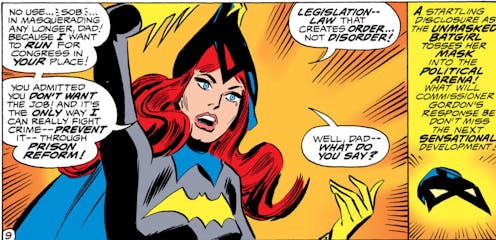
Each July, comics fans, professionals and scholars descend on San Diego, California, for Comic-Con International – a celebration of the art and business of the comics industry. Comic books used to be a niche genre of interest to a narrow subset of popular culture enthusiasts. Since the 1970s, however, they increasingly have supplied the characters and stories on which film, television and streaming media empires are founded.
Marvel, home of the Avengers, turned an almost broke comics and toy company into one of the most lucrative movie franchises in history and became one pillar of Disney’s streaming media empire. Sony continues to make money from its share of the Spider-Man franchise. DC Comics originated fan favorites Superman, Batman and Wonder Woman. Although their transition to film did not match Marvel’s success, WarnerMedia has doubled down on its investment in DC superheroes.
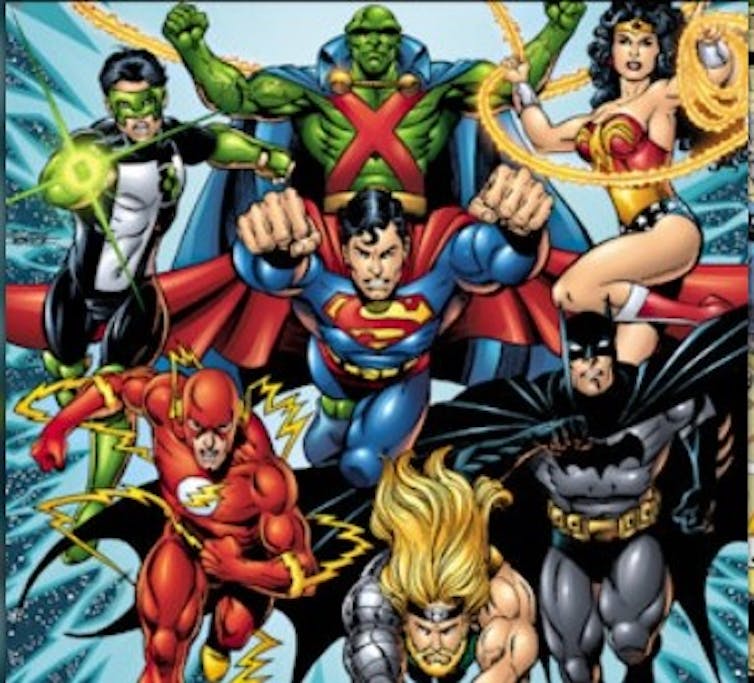
As comic books’ cultural impact has grown, scholars have explored how they have reflected and shaped attitudes about everything from politics to war to economics to gender, race, ability and sexuality.
As a scholar of gender and political culture, I am interested in comic book depictions of superheroines as elected officials. My research collaborator, Ryan Greene, and I have presented analysis of political storylines in comics involving Wonder Woman and Batgirl at Comic Con International. We contend that these comic book depictions aptly illustrate how sexism weakens democracy. Our examination also demonstrates why comics history is relevant to contemporary politics.
Wonder Woman for president
Wonder Woman, the Amazonian princess, warrior for peace and Earth’s self-appointed defender, has long been an icon of feminist strength. She famously graced the cover of Ms. magazine’s inaugural issue in 1972, depicted as a giant superheroine rescuing an embattled world as she ran for U.S. president on a platform of “peace and justice.”
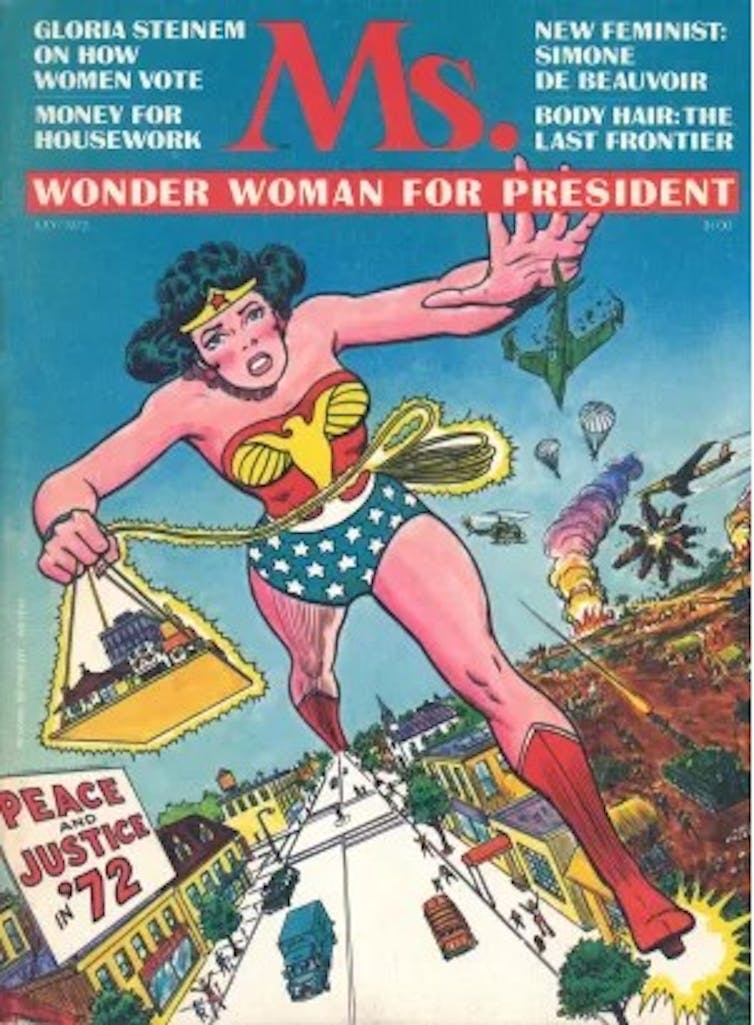
In 1944, however, when Wonder Woman ran for president in the pages of her own comic book, the story exhibited a surprising undercurrent of authoritarianism and sexist thinking.
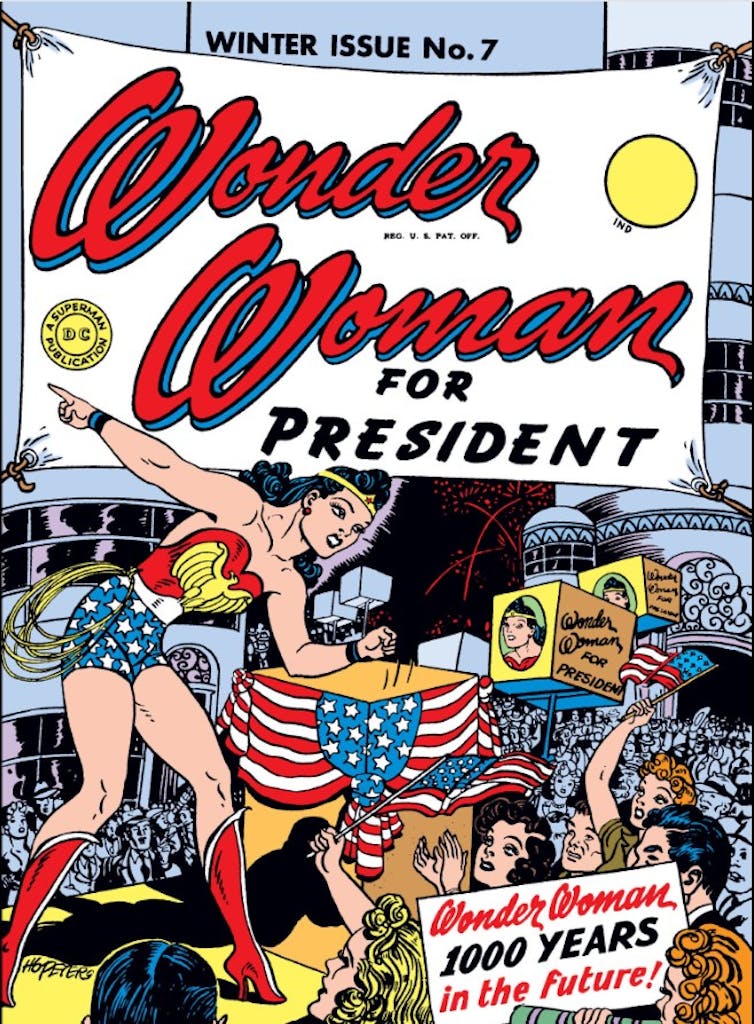
“Wonder Woman for President,” is a flash-forward story set in the 3000s, when women head the governments of the world. Wonder Woman’s creator, William Moulton Marston, believed in women’s moral superiority and conjured a world based on gender differences, with women representing peace and justice and men symbolizing war and corruption.
What Marston called the “new woman’s age,” though, has the trappings of an authoritarian state.
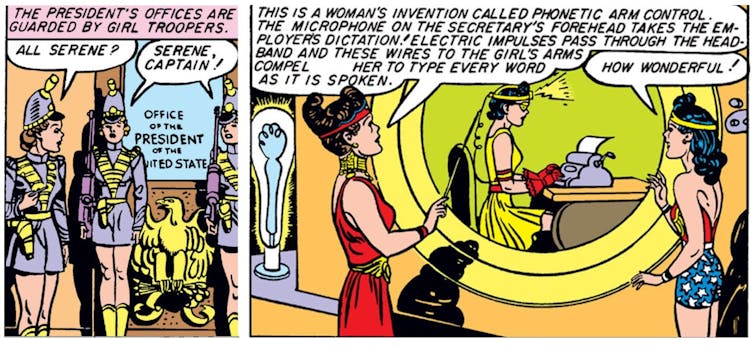
“Girl troopers” guard President Arda Moore, the woman who precedes Wonder Woman’s ascent to the Oval Office. The sky is blanketed with airships spreading “a great net of friendly protection across the length and breadth of America.” Women secretaries cheerfully wear devices on their heads that compel them to type their female bosses’ dictation. Most notably, Wonder Woman’s mother, Queen Hippolyta, assures her daughter that “all men are much happier when their strong aggressive natures are controlled by a wise and loving woman!”
Democracy isn’t dead in the U.S., however, and Wonder Woman’s alter ego, Diana Prince, steps into the political fray in order to keep the corrupt “Man’s Party” from taking control of the government. Her victory is undermined both by young women voters whose girlish infatuation compels them to vote for the male candidate and by a ballot-stuffing scheme orchestrated by the Man’s Party.
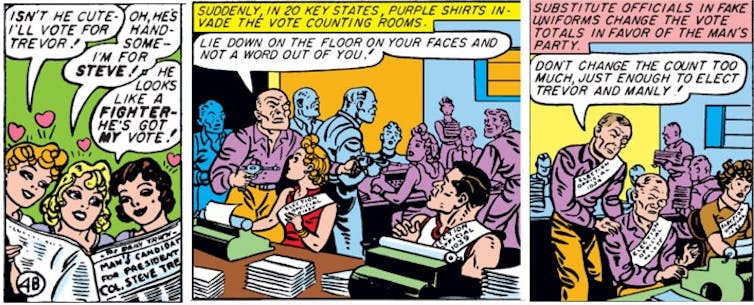
When democratic processes prove insufficient for keeping the peace, Wonder Woman intervenes to foil the Man’s Party’s plan and take the presidential oath as her alter ego, Diana Prince.
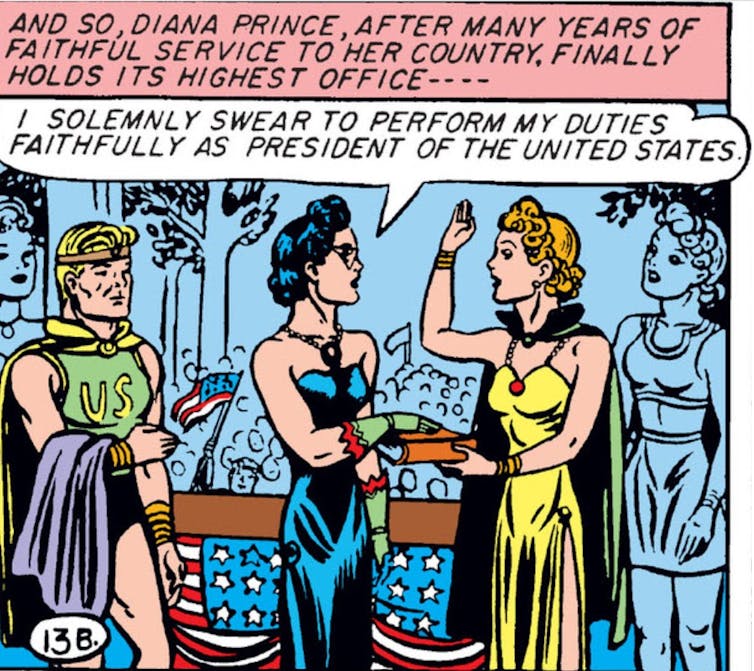
Historian Philip Smith describes “Wonder Woman for President” as a “proto-feminist” story that reflects attitudes about gender that were progressive in their time.
However, our research demonstrates how the comic introduces damaging stereotypes about gender and politics that endure to this day: that gender differences determine people’s approach to leadership; that young women voters are sometimes motivated by sexual attraction; and that when women do gain political power, they use it to dominate men.
Additionally, although Wonder Woman is cast as a defender of democracy, Marston’s story portrays democracy as weak, prone to corruption and ultimately in need of superheroic intervention in order to survive. In that respect, “Wonder Woman for President” mirrors other stories about political superheroes in comics and films that have authoritarian underpinnings.
Giving sexist and authoritarian politics ‘the boot’
A comics narrative that has been overlooked by scholars and fans, however, illustrates how popular culture can foster healthier attitudes about politics and gender. In the 1970s, DC Comics sent Batgirl and her alter ego, Barbara Gordon, to the nation’s capital in a narrative premised on gender equity and the strength of democracy.
In “The Unmasking of Batgirl,” Batgirl is discouraged that the crooks she sends to jail get released and commit more crimes. Disillusioned with vigilantism, she decides that the only way to effectively fight crime is to champion legislation aimed at crime prevention and prison reform.
Gordon launches a campaign for U.S. Congress that promises to give corrupt politicians “the boot” – a nod to Batgirl’s signature footwear – drawing support from a diverse coalition of voters.
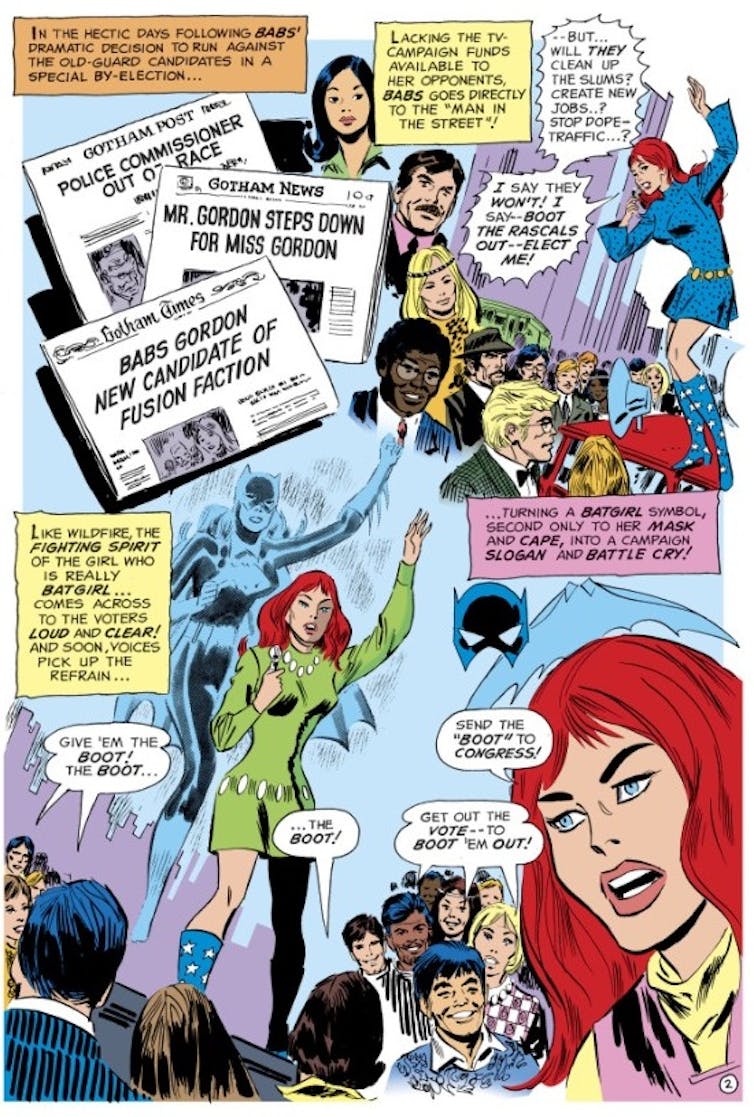
Whereas Diana Prince’s constituents were exclusively white and predominantly female, Barbara Gordon activates a multiracial coalition of women and men from various walks of life. Her heroic Batgirl persona recedes into the background as Gordon deploys a more democratic superpower – persuasion – to accomplish her mission.
As in Diana Prince’s campaign, nefarious actors meddle in the voting, this time using intimidation to depress voter turnout. But rather than waiting for Batgirl to save the day, Gordon’s political supporters intervene to get voters to the polls, assuring her political victory in “Batgirl’s Last Case.”
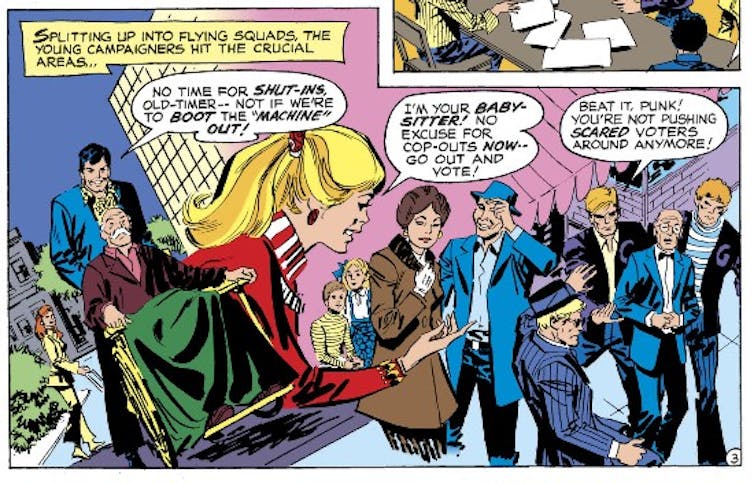
Wonder Woman’s superpowers were needed to compensate for democracy’s weaknesses, but Batgirl’s heroics prove insufficient for ensuring justice. Her faith in the people and in democracy is rewarded when citizens, working together, save the day.
Telling democratic stories
As another presidential campaign season approaches, it’s worth remembering that authoritarian politics don’t always announce themselves as such.
Sometimes, like Wonder Woman’s signature outfit, they’re draped in red, white and blue.
These stories have enduring appeal. “Wonder Woman for President” continues to be celebrated on T-shirts, fan sites and in comics scholarship. And a subset of the voting public has demonstrated support for real-world authoritarian figures who make heroic promises.
Although Batgirl’s congressional tenure has largely been ignored by scholars and fans, it illustrates how even pulpy remnants of historical pop culture sometimes provide a surprisingly robust vision of gender equity and democratic strength.
Karrin Vasby Anderson ne travaille pas, ne conseille pas, ne possède pas de parts, ne reçoit pas de fonds d'une organisation qui pourrait tirer profit de cet article, et n'a déclaré aucune autre affiliation que son organisme de recherche.
This article was originally published on The Conversation. Read the original article.







